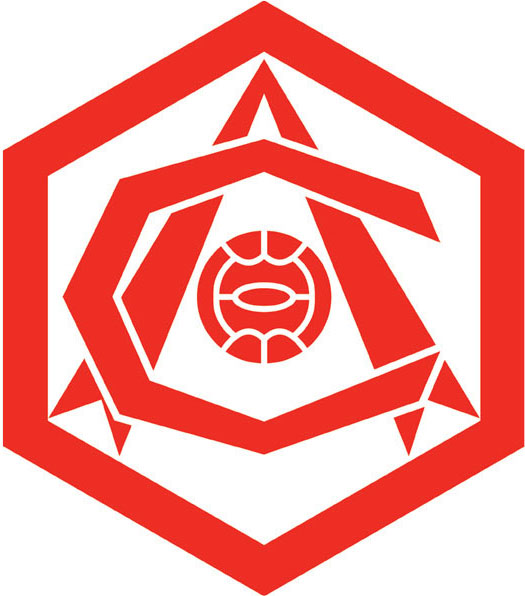
ARSENAL
FOOTBALL FIREPOWER
Arsenal football club’s rich heritage is proudly displayed in the iconic crest – there’s no mistaking that these are the Gunners.
Dial Square, the club that became Arsenal, was founded in 1886 by workers at the Royal Arsenal armaments factory in Woolwich, in southeast London. Its first crest was heavily based on the local council’s coat of arms: reflecting the area’s strong military connections, it featured three cannons.
In the following years the club changed its name to Royal Arsenal and then Woolwich Arsenal. In 1913, it made a surprise move north, across the city, to Highbury in Islington. That could have been the moment for a complete rebrand, but in fact it also took the name Arsenal, along with the Gunners nickname acquired due to the association with the factory, and the cannon symbol, which continued to appear on badges throughout the 1920s.
Legendary moderniser Herbert Chapman took over as Arsenal manager in 1925. He led the team to two league titles and one FA Cup triumph, as well as laying the foundations for the golden era of the 1930s, when the club won the league five times. He was also instrumental in developing the distinctive Art Deco design – more a logo than a crest – which was based on the club’s initials, and graced the stadium in Highbury for several decades. Apart from one cup triumph and two league titles, the post-war period did not bring the same successes until the Double-winning year of 1971. The club’s badge, now in colour and with the addition of the Islington coat of arms, still featured a prominent cannon to reinforce the Gunners moniker.
Of course, there have been other nicknames: in the 1970s and 1980s ‘Boring, Boring Arsenal’ alluded to the team’s dull but efficient style of play; and in the early 2000s manager Arsène Wenger’s unbeaten team were known as ‘the Invincibles’. However, ‘the Gunners’ is a name that has stuck – reiterated by the cannon that endure on the crest.
CLUB: Arsenal FC
NICKNAME: The Gunners
FOUNDED: 1886
STADIUM: Emirates Stadium, London (59,867 capacity)
HISTORIC PLAYERS: David O’Leary, Ian Wright, Dennis Bergkamp, Tony Adams, Patrick Vieira and Thierry Henry

1888–1913. Two years after the birth of the club, the team’s first emblem was created. Under the name Royal Arsenal, the club’s emblem was inspired by Woolwich’s town crest. The three columns are cannons, each with the head of a lion. Cannons are closely linked to Woolwich because the area has a strong military history. This emblem was taken up by the club when it moved to North London.

1922–1925 and 1925–1949. After the moves and the change of name in 1913, it took almost 10 years before a new official club emblem was produced. The one on the left is taken from the 1922/23 season’s first match programme. It was updated three years later, when the gun was turned to the left. Both emblems carry the club’s nickname.

1949–2002. The end of the ’40s saw the club’s first emblem in colour. Red and white reflected the team’s kit, which in turn had been inspired by Nottingham Forest because two of the club’s founders had played there. In the new emblem, Arsenal was written in the Gothic style and the town crest of Islington, the local borough, was introduced. Furthermore it included the Latin motto Victoria Concordia Crescit, which means ‘Victory comes from harmony’ and was suggested by Harry Homer, the editor of the match programme. The crest was modernised over the years.

2002–present. Arsenal ran up against problems when they wanted to patent their earlier crest and so they created a completely new emblem. The cannon was retained but this time turned back to the right. An important element of the new crest was to look forward to the club’s future home, the Emirates Stadium (2006), which had already been planned when the new emblem was introduced.

Arsenal have also used this Art Deco emblem, which was above the main entrance of their old stadium at Highbury. This is not just a club crest but also a piece of wordplay created by Herbert Chapman. The symbols in the hexagon are the letters A and C plus a football, which together form the club’s initials (AFC). This symbol from the ’30s can still be seen on souvenirs.

Arsenal’s all-time top goalscorer Thierry Henry pats the Gunners crest after scoring the winning goal in an FA Cup match against Leeds United in 2012. The 2011/12 season was marked by a 125th-anniversary crest design which used laurel elements from the original club crest.